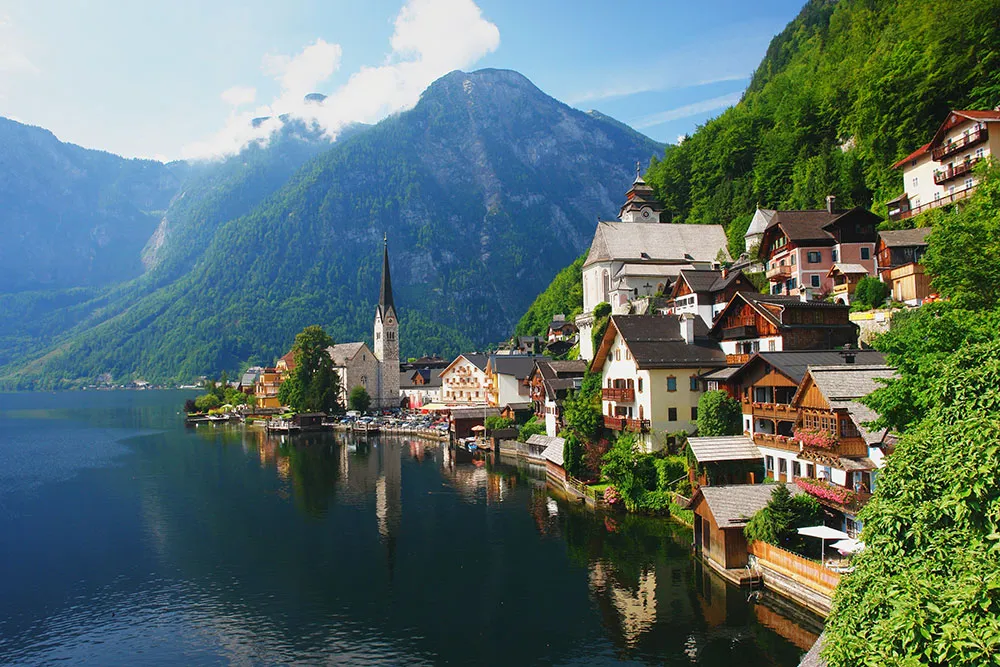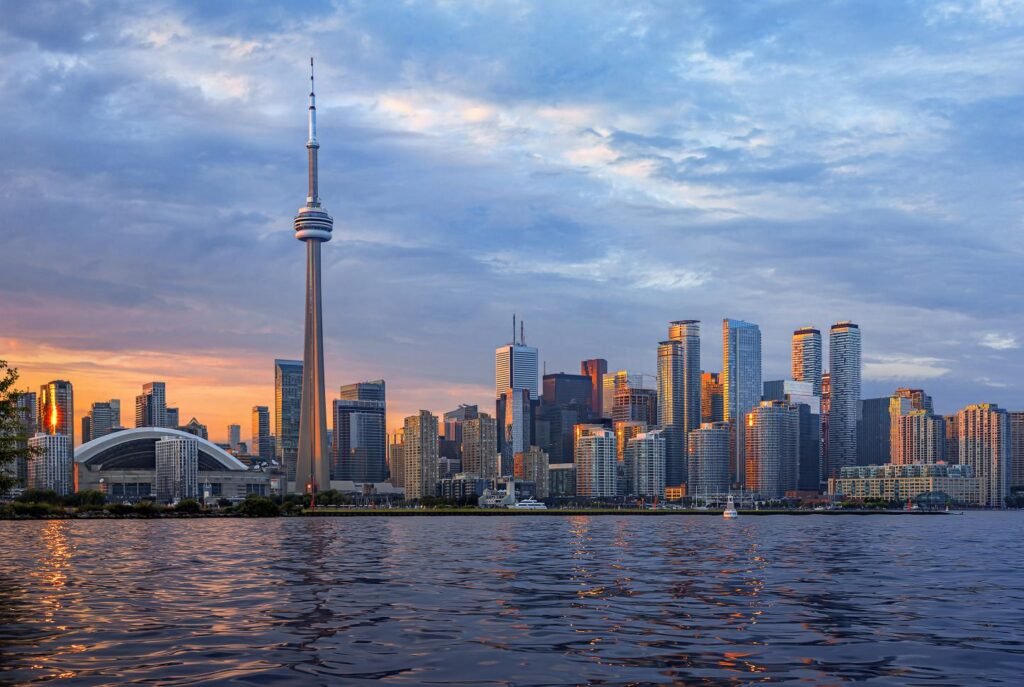You want to know the happiest countries in the world? then you should definitely jump on this article.The World Happiness Report, released by the United Nations, shows that money, sunlight, and warm weather do not guarantee happiness. In fact, the countries with the happiest people are those with cold temperatures, low levels of sunlight, and high taxes. The Nordic countries, such as Finland, Denmark, and Norway, have consistently ranked at the top of the report for the past 10 years, despite the harsh living conditions. This highlights the importance of factors such as social support, personal freedom, and a strong sense of community in determining happiness levels.
To understand which countries have the happiest residents, it is important to examine the results of studies and surveys and the winners will refer to the nations whose citizens believe they are leading fulfilling and content lives. By reading further, you will gain insights into the countries that are considered to be the happiest countries in the world and as a result have the most satisfied and joyful inhabitants.
Let’s get started!
1. Denmark; The first on the list of happiest countries

Denmark ranking as the 1st of the happiest countries in the world, also known as the Kingdom of Denmark, is a Northern European country that includes two overseas constituent countries – the Faroe Islands and Greenland. It is located southwest of Sweden, south of Norway, and bordered by Germany. The country consists of the Jutland peninsula and several islands, including Zealand, Funen, Lolland, Falster, and Bornholm, as well as numerous smaller islands referred to as the Danish Archipelago.
Denmark ranks 1st in terms of life satisfaction with a score of 7.8 and has a 73% employment rate, which is the 6th highest. 71% of its population reports good health, which is 17th highest among all countries. A relatively small number of employees work long hours, with only 1.92% of the population, the 4th highest. The disposable income in Denmark is $23,213, which is the 15th lowest, and 76% of its population has attained an education, ranking 18th lowest. The life expectancy in Denmark is 79.3 years, which is 11th lowest.
2. Norway: 2nd of the Happiest Countries

The Kingdom of Norway is a Nordic unitary constitutional monarchy located in the western part of the Scandinavian Peninsula and includes the Jan Mayen, Svalbard, and Bouvet Island territories. It covers an area of 385,252 square kilometers with a population of approximately 5 million, making it the second least densely populated country in Europe.
Norway ranks 2nd in terms of life satisfaction, with a score of 7.6, and has a high employment rate of 75%, which is the 4th highest. 80% of the population reports good health, ranking 8th highest among all countries. A relatively small number of employees work long hours, with only 2.66% of the population, the 5th highest. The disposable income in Norway is $30,465, the 5th highest, and 81% of its population has attained an education, ranking 15th highest. The life expectancy in Norway is 81.2 years, which is 10th highest.
3. Netherlands: 3rd of the Happiest Countries

The Netherlands is a constituent country of the Kingdom of the Netherlands and is located mainly in North-West Europe with some islands in the Caribbean. The country is bordered by the North Sea to the north and west, Belgium to the south, and Germany to the east and shares maritime borders with Belgium, Germany, and the United Kingdom. The Netherlands operates as a parliamentary democracy and unitary state, with Amsterdam serving as its capital and The Hague as the seat of government. Although the entire country is often referred to as Holland, North and South Holland are just two of its twelve provinces.
The Netherlands ties for 3rd in terms of life satisfaction, with a score of 7.5, and has a high employment rate of 75%, which is the 3rd highest. 77% of the population reports good health, ranking 11th highest among all countries. A relatively small number of employees work long hours, with only 0.68% of the population, the 2nd highest. The disposable income in the Netherlands is $25,740, the 13th highest, and 73% of its population has attained an education, ranking 15th lowest. The life expectancy in the Netherlands is 80.8 years, which is 14th highest.
4. Switzerland: The 4th of the Happiest Countries

Switzerland is a federal republic with 26 cantons and its capital city is Bern. It is located in Western Europe, surrounded by Germany to the north, France to the west, Italy to the south, and Austria and Liechtenstein to the east.
In terms of life satisfaction, Switzerland ranks tied for 3rd with a score of 7.5. It has the highest employment rate of 79% and self-reported good health at 87%, which is the 4th highest. The disposable income in Switzerland is $27,756 which is 5th most, while the educational attainment is 87%, ranking 8th highest. Lastly, Switzerland has a high life expectancy of 82.6, ranking 2nd in the list.
5. Austria: The 5th of the Happiest Countries

Austria, officially known as the Republic of Austria, is a country located in Central Europe and is surrounded by eight neighboring countries. With a population of around 8.47 million people, Austria is a landlocked nation. To the north, it shares borders with the Czech Republic and Germany, while it is bordered by Hungary and Slovakia to the east, Slovenia and Italy to the south, and Switzerland and Liechtenstein to the west.
In terms of well-being, Austria ranks highly in several aspects. According to a life satisfaction score, the country ties for third place with a score of 7.5. Austria also has a high employment rate of 72%, which is the 8th highest in the world. However, its self-reported good health score is not as high, with only 69% of the population reporting good health, ranking 17th lowest in the world. Despite this, a relatively small portion of employees in Austria work long hours, with only 9.02% of the workforce working excessive hours, which is the 10th highest rate in the world. On the other hand, the country has a relatively high disposable income, with an average of $27,541, ranking seventh highest in the world. In terms of education, Austria has a high educational attainment rate of 82%, ranking 13th highest in the world. The life expectancy in Austria is 80.7 years, which is the 22nd lowest in the world.
6. Finland: The 6th of the Happiest Countries

Finland, officially known as the Republic of Finland, is a country located in Northern Europe, in the Fennoscandian region. It is surrounded by several neighboring countries, with Sweden to the west, Norway to the north, Russia to the east, and Estonia to the south across the Gulf of Finland.
In terms of well-being, Finland also ranks highly in various aspects. According to a life satisfaction score, the country ties for fourth place with a score of 7.4. The employment rate in Finland is 68%, which is the 14th highest in the world. The self-reported good health score in the country is 68%, ranking 15th lowest in the world. However, only a small portion of employees in Finland work long hours, with 3.66% of the workforce reporting excessive work hours, which is the 8th highest rate in the world. In terms of disposable income, the average in Finland is $24,958, ranking 14th highest in the world. The educational attainment rate in the country is 82%, which is the 14th highest in the world. The life expectancy in Finland is 80.2 years, which is the 16th lowest in the world.
7. Australia: The 7th of the Happiest Countries

Australia, officially known as the Commonwealth of Australia, is a country located in the Southern Hemisphere. It comprises the mainland of the Australian continent, the island of Tasmania, and several smaller islands located in the Indian and Pacific Oceans. With a total area of 6.68 million square km, Australia is the world’s sixth largest country by land area. It is bordered by several neighboring countries, including Indonesia, East Timor, and Papua New Guinea to the north; the Solomon Islands, Vanuatu, and New Caledonia to the northeast; and New Zealand to the southeast.
In terms of well-being, Australia ranks highly in various aspects. According to a life satisfaction score, the country ties for fourth place with a score of 7.4. The employment rate in Australia is 72%, which is the 9th highest in the world. The self-reported good health score in the country is high, with 85% of the population reporting good health, ranking 5th highest in the world. However, a relatively large portion of employees in Australia work long hours, with 13.99% of the workforce reporting excessive work hours, which is the 4th highest rate in the world. The disposable income in Australia is $26,927, ranking 9th highest in the world. The educational attainment rate in the country is 71%, which is the 12th lowest in the world. The life expectancy in Australia is 81.8 years, which is the 5th highest in the world.
8. Canada: The 8th of the Happiest Countries

Canada is a country in North America consisting of ten provinces and three territories. It is situated in the northern part of the continent, stretching from the Atlantic Ocean in the east to the Pacific Ocean in the west and extending into the Arctic Ocean to the north. With a total area of 9.98 million square km, Canada is the world’s second largest country by land area and shares the longest land border with the United States.
In terms of well-being, Canada is ranked highly in various aspects. According to a life satisfaction score, the country ties for 4th place with a score of 7.4. The employment rate in Canada is 72%, which is the 7th highest in the world. The self-reported good health score in the country is high, with 88% of the population reporting good health, ranking 3rd highest in the world. The portion of employees in Canada working long hours is relatively low, with 3.91% of the workforce reporting excessive work hours, which is the 11th highest rate in the world. The disposable income in Canada is $27,138, ranking 8th highest in the world. The educational attainment rate in the country is 88%, which is the 5th highest in the world. The life expectancy in Canada is 80.8 years, which is the 13th highest in the world.
9. Luxembourg: The 9th of the Happiest Countries

Luxembourg, also known as the Grand Duchy of Luxembourg, is a small landlocked country located in Western Europe and bordered by Belgium, France, and Germany. The country has two distinct regions: the Oesling in the north and Gutland in the south. Despite its small size, Luxembourg is known for being the richest country in the world.
Living in such a wealthy country is known to have a positive impact on residents’ well-being. The country has a small military force consisting of only 800 people and does not have a navy or air force. However, it shares ownership of a military cargo plane with Belgium. Additionally, according to the Guinness Book of World Records, Luxembourg holds the world record for the highest per capita alcohol consumption.
10. Sweden: The 10th of the Happiest Countries

Sweden is one of the happiest countries in the world. Sweden is a Nordic country located in northern Europe and officially known as the Kingdom of Sweden. It is bordered by Norway and Finland and is connected to Denmark by a bridge-tunnel across the Oresund. According to the World Happiness Report, Sweden ranks 5th in terms of life satisfaction, with a score of 7.3. The country has a high employment rate of 73%, ranking 5th highest in the world. A large percentage of the population reports good health, with 79% ranking 9th highest. A low percentage of employees work long hours, with only 1.28% ranking 3rd lowest in the world. Sweden has a high disposable income, with a ranking of 11th highest at $26,633. The country also has a high level of educational attainment, with 86% ranking 9th highest. Sweden has a high life expectancy, ranking 7th highest at 81.5 years.
CONCLUSION
A country’s attribution of being among the happiest in the world is affected by the satisfaction of its residents, which is a key factor in it being among the happiest countries in the world. This list should give you an idea about the happiest countries in the world.






